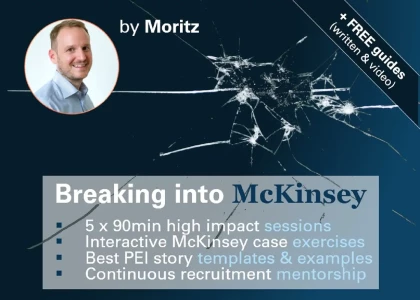The feedback I got after my MBB first round (which I passed) was that my structure had irrelevant buckets, for example:
The case was about a bank that wants to increase its profitability in the loans segment and my 1st layer structure was:
- The bank itself: the financials (rev and costs etc…) my hypothesis was that we could increase rev/decrease cost to create extra profits.
- The loans market: (size, growth, and share of each player) my hypothesis was that we don’t have a large market share and that we would be able to capture more of it to create extra profits.
- Other banks: (what is their value offering?) my hypothesis was that they might offer some special loan/terms that we do not and we might consider offering it as well to create extra profits.
- Customers: (what are their needs?) my hypothesis was that there might be unfulfilled demand among customers and we can customize new products to unlock extra profits.
The feedback I received was that my structure should focus on the most important things (80-20 rule), in this case the financials of the bank and the loans market, and that the competitors/customers buckets weren’t as relevant and should not have been there.
It sounds to me like looking into comps/customers is relevant as there is potential to increase profits by looking into the hypothesis mentioned regarding each one. Moreover, not including them in my structure feels to me like not being MECE in terms of exhaustiveness.
What do you think about it?
(edited)




Thank you for the detailed answer! One question bugs me though, isn't doing a structure composed solely of revenues and cost seem too lean from an interviewer's standpoint? Wouldn't it look like I'm not insightful enough?
Those are just the buckets! The real magic happens at the endpoints of your structure. That’s where you can show incredible insight with regards to what drives rev and cost. These drivers can relate to the company, competitors, macroeconomics, product itself, etc. All the elements you have in your structure in your original question but better sorted.
Moritz is exactly right. Your takeaway here shouldn't be "oh, so I should do revenues/costs here then?" Both approaches are wrong! You're fundamentally thinking about frameworking the wrong way...you need an objective-driven approach. I'd highly recommend coaching to get there!